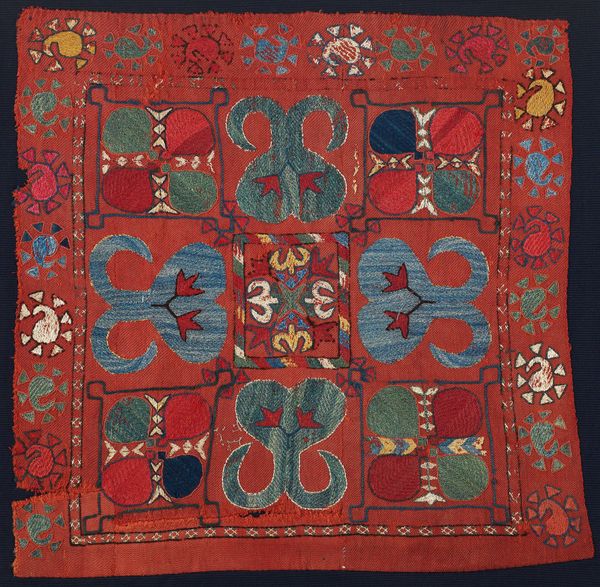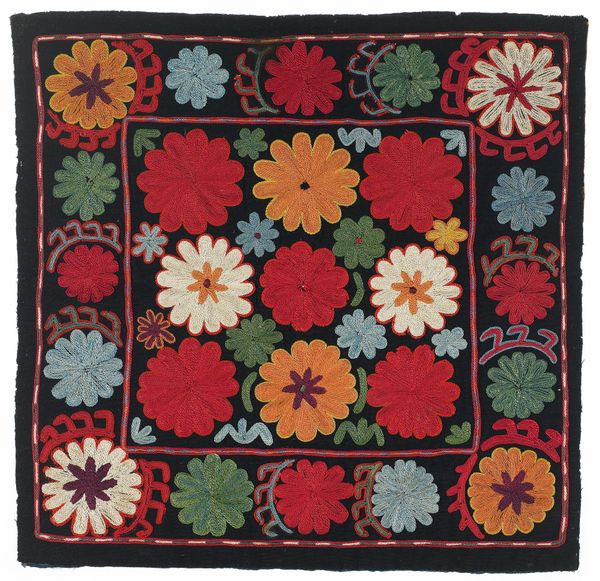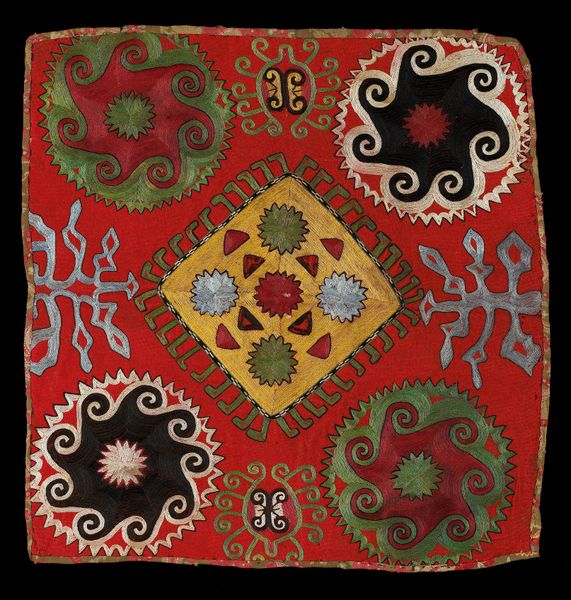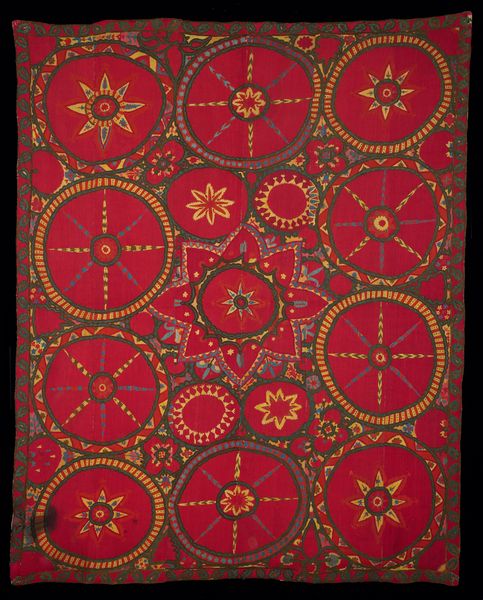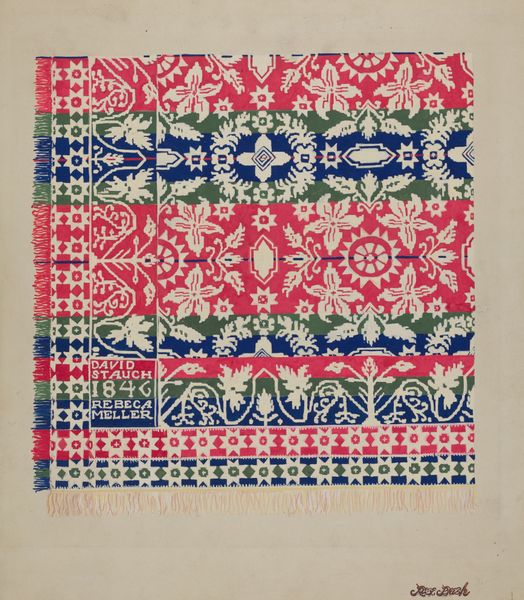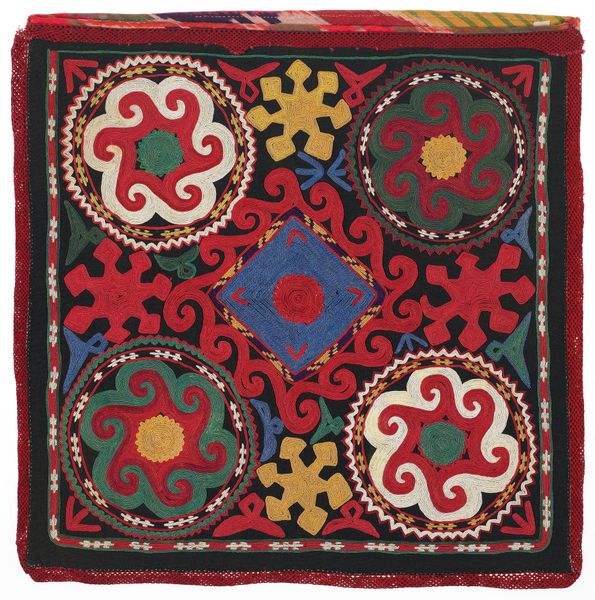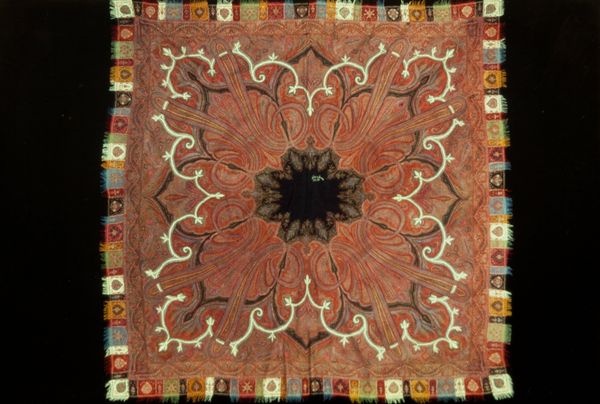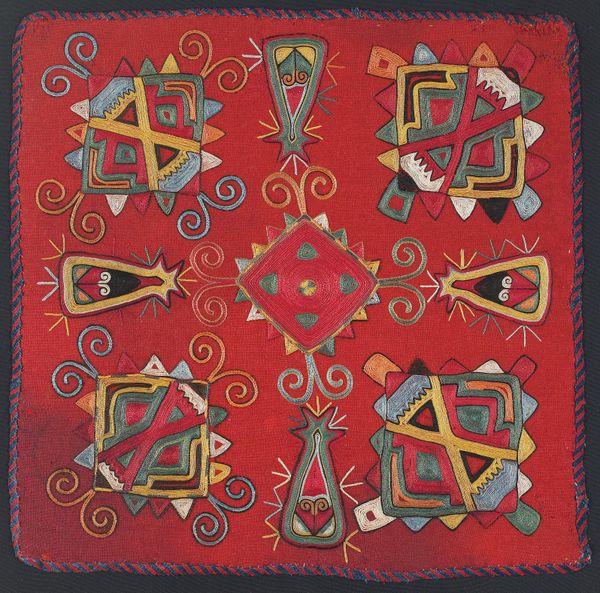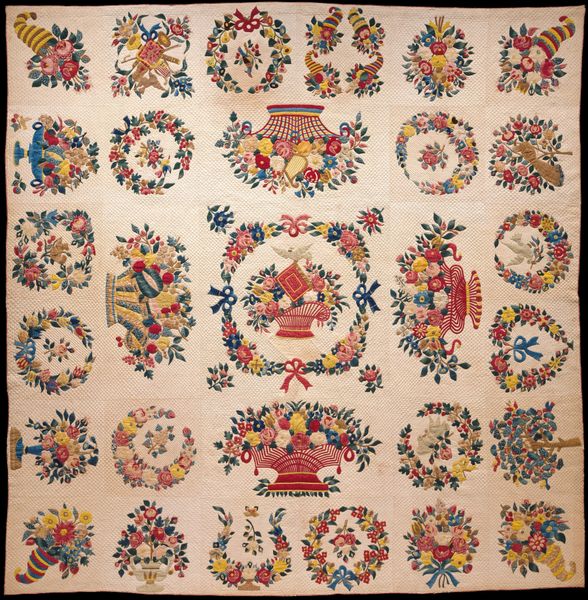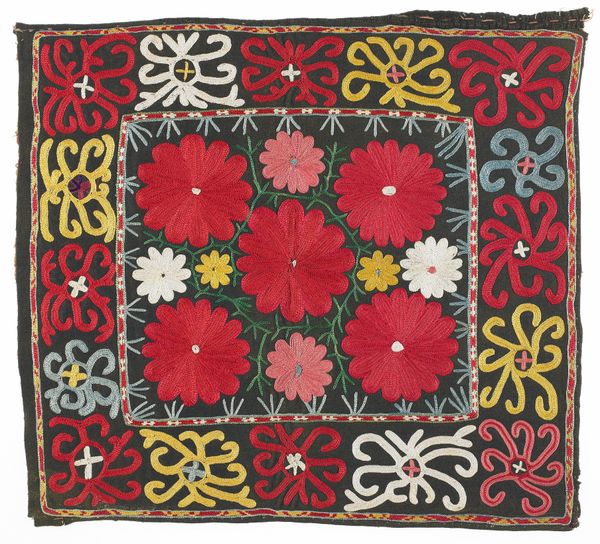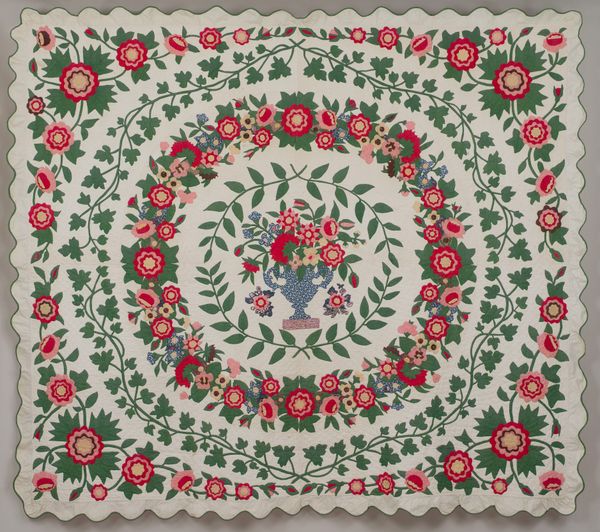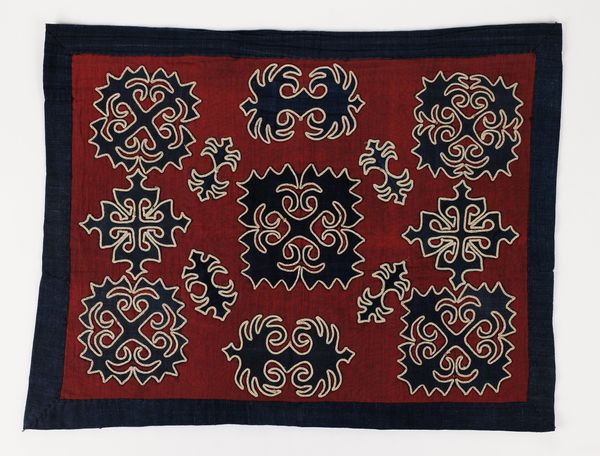
silk, textile, cotton
#
pattern heavy
#
natural stone pattern
#
silk
#
asian-art
#
textile
#
geometric pattern
#
pattern background
#
abstract pattern
#
geometric
#
repetition of pattern
#
pattern repetition
#
cotton
#
layered pattern
#
funky pattern
#
combined pattern
Dimensions: 21 x 23 in. (53.34 x 58.42 cm)
Copyright: Public Domain
Editor: Here we have "At torba ilgich," a textile work likely from the 19th century, made of silk and wool, and currently held at the Minneapolis Institute of Art. I’m immediately struck by the intense symmetry and how meticulously patterned it is, almost dizzying. What can you tell me about it? Curator: This piece invites us to consider the role of women and craft in 19th-century Lakai culture. Looking closely, can you see how the geometric designs are both abstract and yet evoke the natural world? These textiles were often made by women, for use in their own homes or as dowry items, becoming powerful signifiers of identity and social status. How do you think the act of creating something so intricate and beautiful might have served as a form of empowerment in a society with strict gender roles? Editor: I hadn't thought about the power dynamics at play. The intensive labor involved also speaks to a sense of dedication. Does the "At torba ilgich," its potential function as a bag or wall hanging, intersect with daily life? Curator: Precisely! These weren’t just decorative objects; they were integrated into the rhythms of daily existence, bearing witness to personal and communal experiences. Think about the conversations that might have taken place around it as it was being made, the stories woven into the very fabric. Can you imagine the role it played in a woman's life? Its symbolism carries a lot of depth. Editor: That's fascinating – so it’s more than just a pretty object, it is part of a deeper history of how women expressed themselves within specific social constraints. Curator: Exactly! It becomes a visual representation of agency, creativity, and connection, resisting a purely patriarchal narrative. By studying the object, and understanding its history and cultural background, we expand our understanding of the world through their experience. Editor: I’ll definitely look at textiles differently from now on! Thanks for pointing that out!
Comments
No comments
Be the first to comment and join the conversation on the ultimate creative platform.
